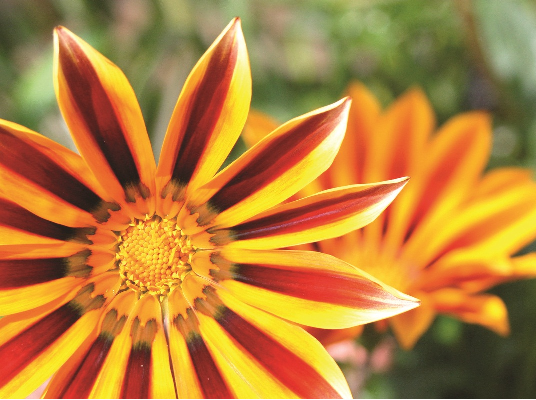After all those weeks in early summer when it seemed unable to stop raining, many plants will have been lulled into a false sense of security.
And those of us who look after the plants are also likely to have become a little too used to not worrying about what and how to water to best effect, and how to minimise the effects of dry weather. So if you’re now finding yourself battling with the effects of a more text-book summer, here are my tips for coping:
 Mulching really does help to keep the moisture in the soil. It’s important to make sure the soil is really well watered BEFORE you apply the mulch, so water well or wait until after there has been a heavy rainfall. Then around the area, covering the roots of the plant (or preferably a bit further) shovel on well-rotted manure, composted bark or garden compost. Don’t forget that vegetables as well as flowers benefit from mulching.
Mulching really does help to keep the moisture in the soil. It’s important to make sure the soil is really well watered BEFORE you apply the mulch, so water well or wait until after there has been a heavy rainfall. Then around the area, covering the roots of the plant (or preferably a bit further) shovel on well-rotted manure, composted bark or garden compost. Don’t forget that vegetables as well as flowers benefit from mulching.
A slow but steady supply of water is generally more use and more appreciated by plants than intermittent heavy drenching. Newly planted trees and shrubs establish better and suffer drought stress less if the soil is never allowed to dry out completely. Installing some perforated or permeable pipe beneath the soil surface or on the surface but beneath the mulch provides just what they need.
If you’re making any new plantings for the patio right now, don’t risk them becoming drought stressed before their moment of autumn or winter glory comes. When planting up late season patio pots, decrease the effects of the summer sun by lining the insides of the pot with bubble-wrap polythene.
When you do need to use extra water on your garden, try to apply it in the evening or otherwise as early as you can in the morning.
Less will be lost by evaporation and there will also be less likelihood of plants suffering scorching.
However much you’ve taken a fancy to a gorgeous looking plant in your local garden centre, don’t buy it right now. In hot, dry conditions it is much harder for a plant to become established and much more likely that it’ll suffer stress.
A bit of temporary shading, perhaps in the form of some shade netting (available from garden centres) or some large, leafy branches driven in to the soil, will help to keep things a little cooler during the hotter weather. It may not look great, but it could save you a packet in replacing plants. Vegetable plants can be covered with netted cloches (like the Giant Easy Net Tunnels available from my website) to achieve the same effect – and these will also help to keep off many potential pests too.
Siphoning water out from the bath is a great way to re-use domestic water. The usual tiny quantities of soap or bubble bath used by most of us won’t cause any problems with plants and makes a great drink for trees, shrubs, flowers and vegetables.
Remember that some plants are more tolerant of dry conditions than others, so next time you do shop for plants, it may be worth bearing this in mind. On the whole, plants with silvery or densely hairy leaves are pretty drought tolerant tolerant, as are those whose names imply that they are of Mediterranean origin. Some of my favourite drought-resisters include:
Convolvulus cneorum – stunning silvery leaves and miniature white flowers, often with a touch of pink, which resemble those of morning glories.
Rosemary – this shrub has great purple flowers and wonderfully aromatic foliage, perfect for cooking, and when mature many people use the wood to make barbeque skewers which are said to impart a delightful rosemary aroma to the meat.
Senecio maritima – a pretty divided leafed plant with dense hair on the leaves making it look silvery.
Gazanias – with their large orange, brown and burgundy flowers and silvered leaves, they look a treat in patio pots of summer borders.
Lavenders – aromatic leaves and perfumed blue, lilac purple or white flower spikes, this cottage garden favourite is also a magnet for bees.
Geraniums and their cousins, Pelargoniums, are both very drought resistant, and come with foliage that is often attractively marked and pretty flowers. Pelargoniums, usually the more flamboyantly coloured of the two, are not hardy but great in summer containers and the herbaceous geraniums should last for years.
By Pippa Greenwood
